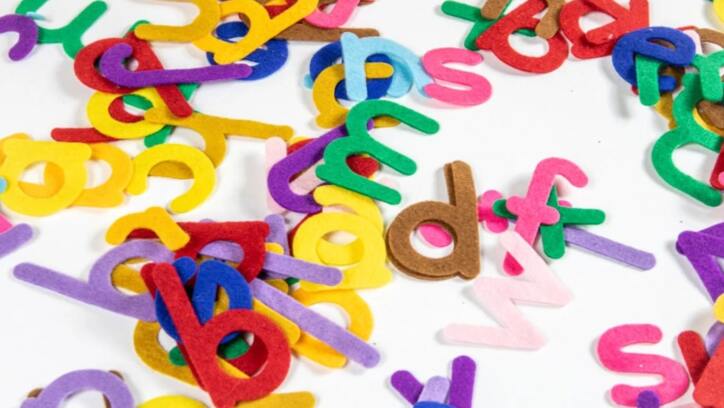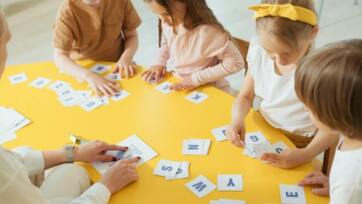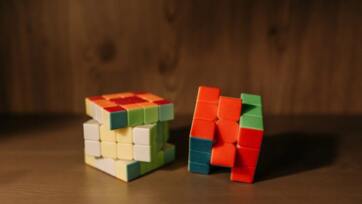Introduction
Toddlers start their cognitive journey by understanding colours, representing one of their earliest mental development tasks. Colour recognition capabilities create fundamental world knowledge while improving children's communication functions through development. Children can discover various colours through a learning quiz specifically designed for colour education that will ignite their interest. Toddlers better understand the connection between everyday objects and colours because interactive activities and playful exercises help them remember the colour lessons.
The Importance of Color Recognition in Early Development
Earlier learning of color recognition creates fundamental knowledge that leads to the discovery of sorting patterns matching capabilities and categorization skills. Recognizing colours becomes essential for language acquisition because children connect word terms to particular objects. Association between red color and apples and fire trucks and stop signs enables children to develop vocabulary skills while refining their abilities to observe things. The growth of creativity and imagination depends upon colour understanding because these abilities are vital developmental traits for toddlers.
Why Interactive Activities Work
Interactive learning activities work effectively for teaching toddlers because they require direct physical involvement. Toddlers demonstrate better memory retention by involving themselves in their education activities. Through active exploration, children examine their environment by exploring with their hands to handle objects while performing experiments regarding different colours. Learning quizzes for colour recognition should require students to match coloured cards, place-coloured objects in containers, and identify colours in pictures.
Simple Color Recognition Quiz: Matching Game
The matching game is one of the easiest and most entertaining interactive activities that toddlers love. The toddlers will benefit from coloured blocks or cards that parents or caregivers should place in front of them. The objective of this activity requires the toddler to match coloured blocks with surrounding room objects such as a red chair, a blue ball, and a yellow book.
Using Colorful Toys for Engagement
Toddlers can participate in colour recognition quizzes through the effective use of toys. The market offers various educational toys intended for colour instruction, including stacking rings, colour sorting baubles, and rainbow-coloured shape sorters. The toys attract young children's interest while allowing them hands-on educational experiences. The activity will enable children to grasp their play items before they deposit them inside appropriate containers matching their colour. Integrating toys into the quiz lets children link colour vocabulary with familiar, enjoyable objects, resulting in an educational and pleasurable learning experience.
Colourful Art Activities for Learning
Colour education for toddlers becomes simpler through functional artwork activities. Through painting, drawing, and coloring, toddlers gain direct contact with colours, producing artful and sensory-engaging learning experiences. The parents should establish a colour recognition test through colourful painting materials while directing the child's selection of proper tones for specific objects. Any illustration of the sun should lead to selecting a yellow colour, while drawings of trees need a green colour. Young children develop creative skills while expressing themselves through artistic activities, which simultaneously help them learn colour identification.
Digital Color Recognition Games
Screen-based activities function effectively as additional educational material that enhances traditional classroom instructions in our current digital society. Children of the toddler age range can take advantage of specially made digital applications that assist them in learning colour recognition. Children stay focused on digital tools because these tools utilize animations alongside sounds and interactive features. A toddler must perform a task in the app by selecting the red apple or the blue car from the displayed objects.
Sensory Exploration with Colored Objects
Parents can use sensory exploration with food items such as coloured rice and shapes out of foam or fabric pieces to help children touch and activate their colour learning process. The activity becomes educational yet interesting when toddlers use their sense of touch to identify object colours during interactive manipulation of the items. Through sensory experiences, children will better connect visible colours with concrete objects.
Outdoor Color Recognition Adventures
It is fruitful to incorporate natural outdoor elements when teaching toddlers about colour recognition through their surrounding environments. The park and garden offer numerous chances to conduct colour recognition quizzes. Parents should identify different colours to the toddler during outdoor observations of flow colours rees and animals while asking the child to name them. Parents can use these observations to ask colour-recognition questions when observing a red flower, green leaves, and a blue sky. A nature experience offers toddlers multiple advantages for colour recognition and allows them to link colours with things they see in their environment.
Colour Recognition with Food Items
Colour recognition education can be easily taught through food by having children practice identifying different colours in an enjoyable environment. The colour quiz, created by parents from different coloured fruits and vegetables, enables their toddlers to perform food-matching tasks based on colour identities. The toddler should identify red strawberries with orange carrots and green cucumbers in a basket during their activity. Toddlers who experience this approach develop a better understanding of colours and their appearance in various settings due to the method. The educational aspect of food tasting enhances sensory perception because it delivers another learning sensation through taste.
Group Play for Social Learning
Peers provide a productive environment for toddlers to recognize colours during their learning process. Through group activities, toddlers practice socialization while reinforcing their color knowledge with the help of peer interactions. Toddlers can explore a colour scavenger hunt within a playroom or outdoor area as they jointly search for objects with various colours. The combination of social encounters leads toddlers to learn language abilities along with enhanced communication skills that create a lively learning experience. The group participation activities teach young children important teamwork skills essential during early childhood development.
Reinforcing Color Knowledge with Books
Books serve as a classical instrument for teaching toddlers new learning material. Parents can find various colorful illustrated picture books specifically made to educate children about colours. Parents should establish colour recognition quizzes by reading colour-themed books to the toddler, which leads to colour identification questions about the book's illustrations. After finishing a book detailing colours, the parent can request the toddler to identify coloured objects in the room that appeared in the book. The learning process becomes stronger when the toddler makes direct word-to-color associations.
The Role of Repetition in Color Learning
Learning and maintaining new material requires repetitive exposure according to toddlers' education needs. Exposure to multiple colours increases the probability that young children will develop the ability to remember colours no matter their situation. The colour recognition quiz becomes more effective at memorizing things when it includes repetitive elements. A set of coloured objects should be repeated daily to help the toddler learn colours better. Repeated colour-related experiences throughout time enable toddlers to understand colours better.
Creating Color-Themed Challenges
Child development best results from providing challenging activities that motivate and entertain toddlers. For example, the activity instructs the toddler to search for several yellow objects while they have a limited period to complete the task. A colour sorting challenge presents the child with the task of matching-coloured cards with specific-coloured blocks. Such active learning activities challenge toddlers while allowing them to participate in the education process. The celebration of achievements along with progress provides a chance to build confidence levels and create enthusiasm.
Connecting Colors to Everyday Life
Toddlers learn colours best by using the real-life experience to connect new information. Parents should guide their children to see colours in ordinary surroundings during their daily activities. The child's task should involve identifying the colours on their shirt and shoes during dressing time. While driving, parents need to mention the coloring of different automobiles, traffic indications, and urban development structures. When children relate colour understanding to normal activities, it creates stronger memories about colours while making these colours an essential part of their world understanding.
Positive Reinforcement in Learning
Toddlers benefit greatly from positive reinforcement when participating in their colour recognition tests. The learning process receives strong support from both praise and encouragement. After each correct colour identification, parents should reward the child with praise, physical engagement, and minimal rewards. The affirming feedback enhances their self-esteem and helps them continue advancing their learning, including their colour-recognition puzzle skills. When success happens, it keeps toddlers focused, which develops in children both excitement for learning and positive learning approaches.
Conclusion
Combining enjoyable, coloured learning activities is an effective method of teaching toddlers about colours. Toddlers construct strong fundamental colour competence by combining active educational approaches with visible communication methods and touch-related interactions that form foundations for advanced learning concepts.









